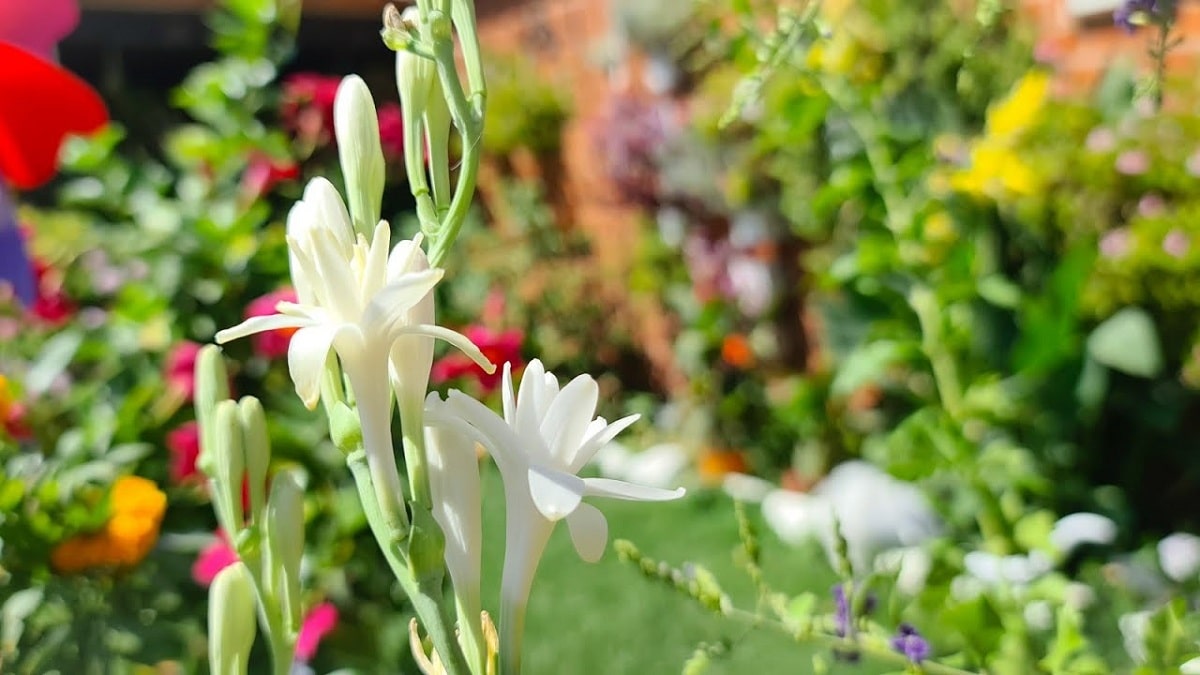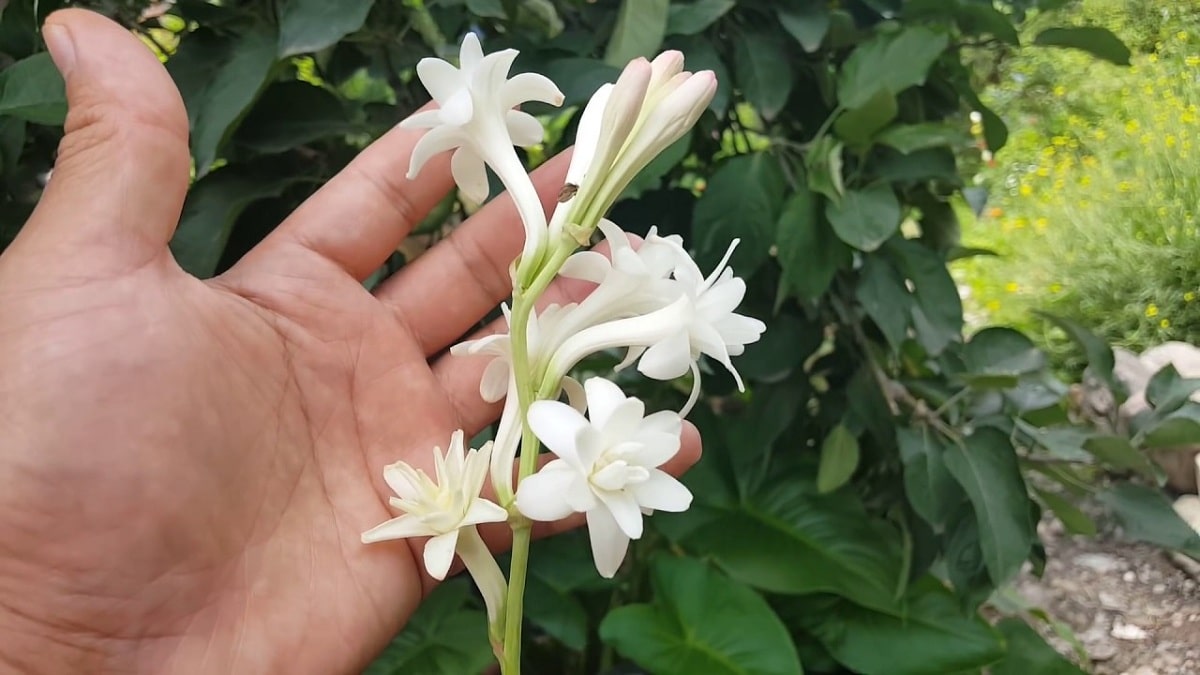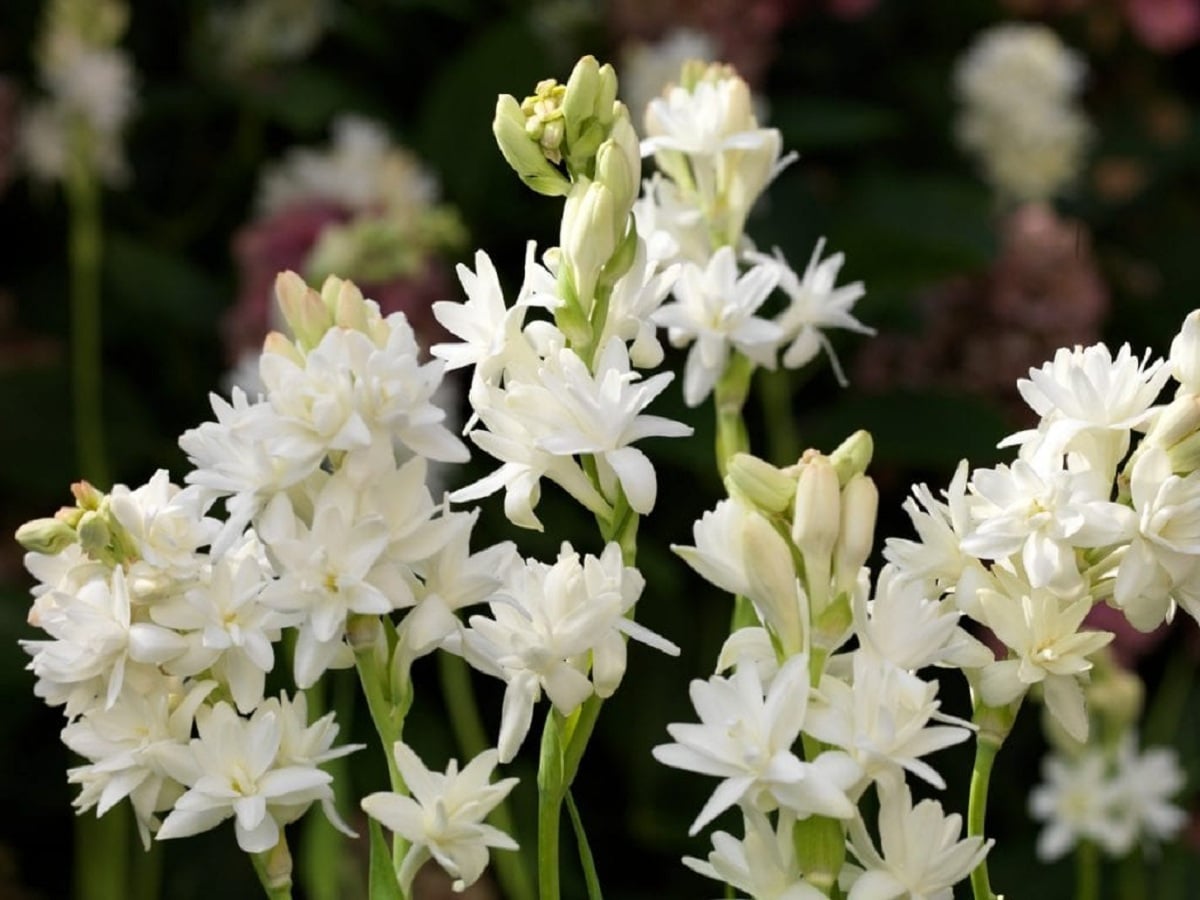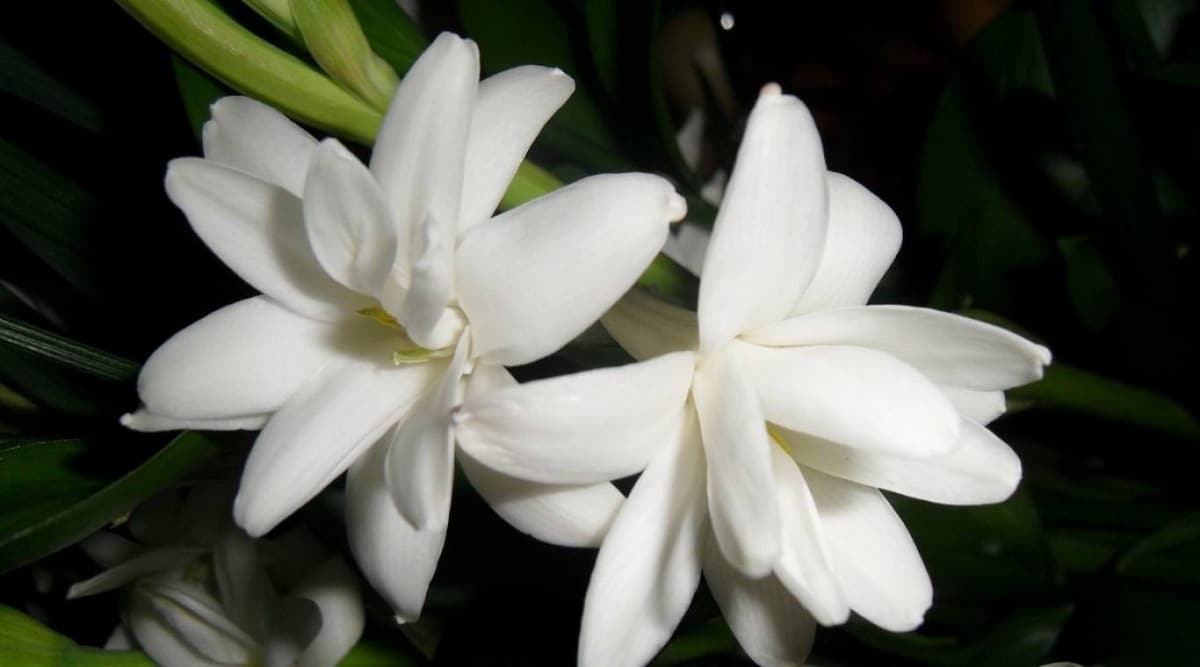
When autumn arrives, the perfect time comes to remove the bulbs and / or rhizomes that are planted in this season and that will bloom during the spring, and why not? Acquire some new ones to expand the collection of beautiful and colorful flowers. Some of the most interesting are the tuberose, which have petals which give off a very intense aroma. The doubt of many people is how the tuberose are planted. They can be planted both in the garden and in a pot, and they are also very easy to grow, so much so that they are suitable for beginners.
Therefore, in this article we are going to tell you how tuberose are planted and we will give you some advice about them.
What are tuberose like?

Our protagonists are perennial plants with tuberous roots that grow up to 1 meter in height. They are known by the common names of Amole, Vara de San José, Nardo or Nardos, and by the scientific name of Polianthes tuberous. They are native to Mexico, although they grow throughout Central America.
It is characterized by having glossy green leaves and spike-shaped flowers up to 45cm white or pink, which sprout from late summer to early fall. These are often used as cut flowers, and can last up to 40 days.
Requirement of tuberose
When it comes to planting this plant, whether in a pot in the garden, there are aspects that are extremely important when it comes to achieving proper development. Among these factors is the location and irrigation. They are grown from its bulb and you must wait until the temperature is warm and the humidity between 60-70%. The best time to plant tuberose is early spring. The flowers usually appear in late spring and usually last well into October.
The best location to plant is in sunny areas. In this way, we get a good rooting and a correct development. We choose a sunny area since it needs a large amount of light radiation. If you have chosen to grow multiple bulbs, it is advisable to leave a space of between 15-20 centimeters between them. It is essential that the soil is rich in nutrients and has good drainage. Soil pH should be between 6-7. Drainage is essential If not, we have the irrigation or rain water to stagnate. This water that generates puddles can lead to rotting of the roots.
Irrigation is a fundamental aspect. It is advisable to water during the first two months every two days. When you see the first buds bloom, reduce watering to 2-3 times a week. Make sure that the soil does not puddle during watering. The soil must be well water.
It is advisable to add some compost. One of the most recommended is a fertilizer that contains equal parts nitrogen, phosphorus and potassium. The compost must be specific for those bulbous plants.
How are they planted?

If you want to have tuberose, follow this simple Step by Step:
- The first thing to do is measure the rhizome, to know its height.
- Afterwards, a planting hole or pot is made of the same depth as its height, placing the narrowest part facing upwards. For example, if it is about 4cm, the hole should be 4cm deep.
- It is then covered with soil or substrate.
- And finally it is watered.
Care required by tuberose

They are very easy to grow plants; However, in order to enjoy an interesting amount of flowers, we recommend that you provide them with these cares:
- Location: outside, in full sun.
- Soil or substrate: it must have good drainage, and be rich in organic matter. A good mix would be 60% black peat or mulch + 30% perlite or similar + 10% worm castings.
- Irrigation: about 3-4 times a week in summer, and a little less the rest of the year.
- Subscriber: it is advisable to pay the tuberose from early spring to summer, following the instructions specified on the product.
- Multiplication: by division in autumn.
- Rusticity: withstands mild frosts down to -2ºC.
Main uses
Once we know how tuberose are planted, it is important to know the main uses that are given to this plant. The stems of the dart are called rhizomes and are used in industry to create perfumes. In order to create perfumes with tuberose stems, it is essential to crush and distill them previously. In this way, an intense aroma and strong color are achieved. The agent is usually extracted by steam distillation from the resin obtained from the plant.
Another of the applications that are given to these plants is related to the world of natural medicine. And there are numerous plants with medicinal properties that can be had in our home and put it to good use. Let's see what are the main conditions that tuberose can treat:
- Insomnia: it is good to combat the lack of sleep if it is used in an infusion.
- Immune system problems: for all those people who have low defenses, tuberose infusions can be used to combat these problems.
- Stress: it also helps combat the stress of day-to-day problems.
- Fight against fungi and bacteria: numerous infections come from fungi and bacteria and thanks to this, it can be treated on numerous occasions.
- Digestive problems: infusions with tuberose can also solve some problems with slow and heavy digestions.
- Treatment of various infections
- The stem can be consumed orally to clean the uterus and treat some menstrual disorders.
Although they can treat most of the above problems, it is not to forget that it should not be consumed improperly. A consumption that is not calculated for a specific person, or that will be an excessive consumption, can be negative for health. Therefore, in these cases it is better to consult a professional before proceeding with its consumption. It is better to know all the effects and dosage recommendations to take from these plants.
I hope that with this information you can learn more about how tuberose are planted and some other things.
Please ... how many cm of soil in height should the pot have where to plant tuberose bulbs?
Hi Lidia.
It depends on the height of the bulb. For example, if it is about 2cm, the pot has to be about 10cm deep (more or less).
A greeting.
Hello good day.
I have six clumps or groups of bulbs with excellent freshness and development, but at the time of flowering only one flower has produced and the rest nothing at all.
What will this shortage of flowering be due to, since they all have the same irrigation and substrate.
Hello Faust.
They may be of weaker genetics. Even if they come from the same consignment, there will always be some who will not end up adapting as well to the place as their »brothers».
You can help them by fertilizing them with a fertilizer for bulbs, following the instructions specified on the package.
A greeting.
very good indications, thank you very much
I need to know how the bulbs are separated without damaging the central bulb and when it should be done
Regina
Hi regina.
It is done when the flower has completely dried, with clean and disinfected scissors. You have to make pieces making sure that each one has at least one bud (or protuberance), since it will be from there where the new leaves will emerge.
Greetings.
Very complete article
We are glad that you liked it 🙂